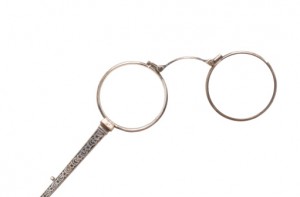Over 60 percent of the adult population in the United States today wears eyeglasses. Modern day eyeglasses have their roots that date back more than 1000 years. In the middle ages Monks were known to use reading stones that were glass spheres, sometimes filled with water, that were placed on top of objects in order to magnify them. The first documented use of eyeglasses was attributed to being developed in Italy. In the 13th century Venetian glass blowers made the first solid glass lenses that were held by frames and that were a primitive version of modern day wearable eyeglasses.
In the 17th century eyeglasses started to be made that could correct vision. Glasses could be made with either concave lenses, for nearsightedness, or convex lenses for farsightedness. Benjamin Franklin invented bifocal lenses in 1784. Glass was the material used in the production of eyeglasses for centuries until the latter part of the 20th century when plastic became widely used in eyeglasses as it was lighter and safer than glass. Now many eyeglasses are being made from polycarbonate which is lighter still and more resilient to scratches.
All content of this newsletter is intended for general information purposes only and is not intended or implied to be a substitute for professional medical advice, diagnosis or treatment. Please consult a medical professional before adopting any of the suggestions on this page. You must never disregard professional medical advice or delay seeking medical treatment based upon any content of this newsletter. PROMPTLY CONSULT YOUR PHYSICIAN OR CALL 911 IF YOU BELIEVE YOU HAVE A MEDICAL EMERGENCY.

